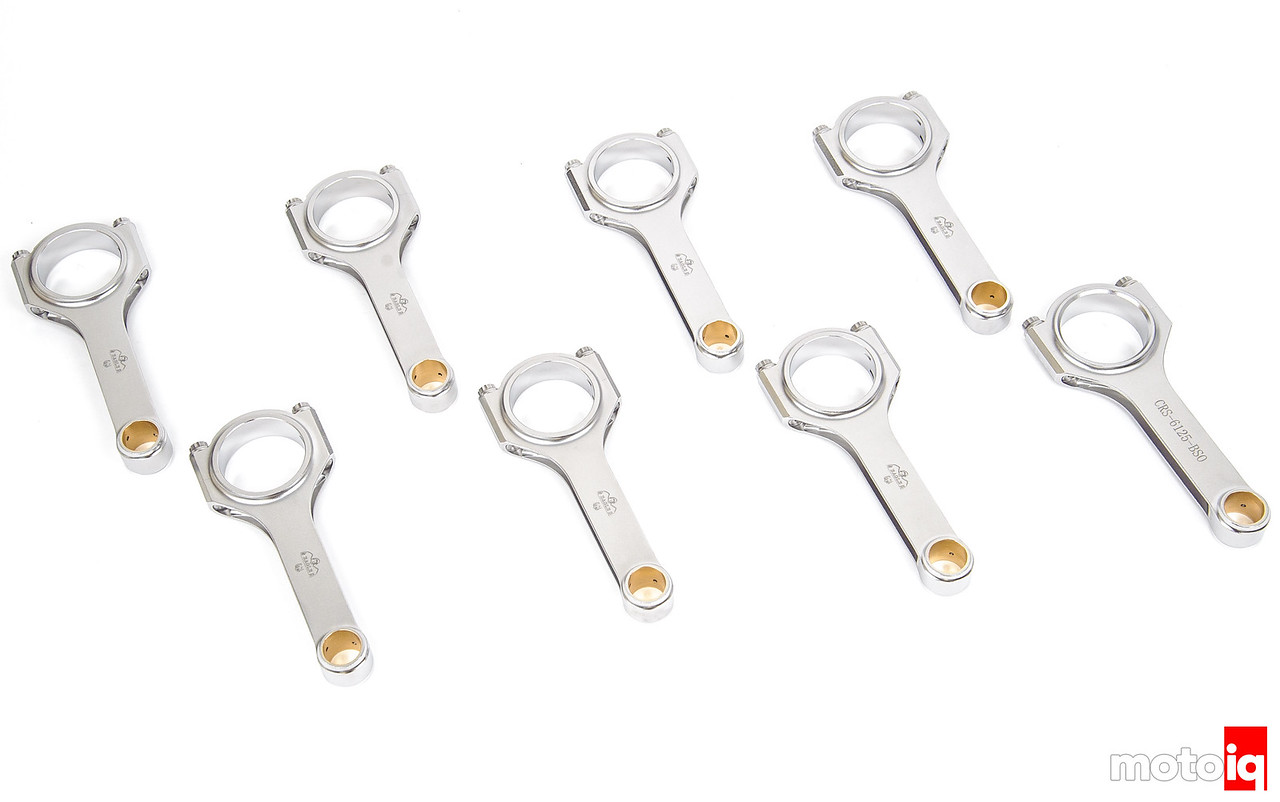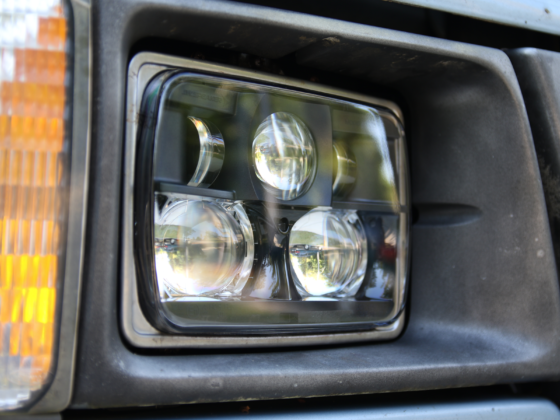
We are using Crower shaft roller rockers part number 74173F. We have found that conventional rocker arms when subjected to pro drifting stress often tilt and fall out of position hitting the retainers, knocking off the keepers and causing the valve to drop usually destroying the engine. With shaft rockers, this is not possible as the rockers pivot off of a fixed shaft. Crower’s shaft rockers pivot on needle bearings to reduce friction and the rocker tips are rollerized to reduce side load on the valves. The reduction in friction also means that the roller rockers contribute a lot less to oil temperature. People don’t realize it but valvetrain friction can produce as much as 50% of the total heat the oil must dissipate in the engine! A roller cam and roller rockers can go a long way in reducing this heat. The reduction in friction and the more accurate valve motion that roller rockers provide also increase power. The rocker body is investment cast out of stainless steel. We have found that the Crower stainless steel-bodied rockers are the most durable parts on the market.

On an LS engine, the stress of the individual rocker can sometimes cause the head to crack where the rocker pedestal is near the intake port ruining the head. CNC ported heads like we are more prone to this as the porting thins out the material in this area making it weaker. Shaft rockers spread the stress out over the entire head by using pedestals like these Crower parts.

Engine Pro provided these 5/16″HI-TECH pushrods part number 581-8600. The pushrods are made of centerless ground 0.083 wall thickness seamless chromoly tubing in one piece. The ends are formed on, not pressed or welded with extra thickness at the ends for strength. The pushrods are heat-treated for guide plate compatibility. LS motors don’t have a lot of pushrod clearance so these pushrods are smaller in diameter but thicker-walled than most.

We will also be using AFR supplied lightweight titanium retainers, machined billet keepers, spring seats and valve seals.

We used AFR Supplied PAC racing dual valve springs. When putting together an engine’s valvetrain, it is usually advisable to use all of the parts recommended by the manufacturer of the cam. Often these parts are matched together to reduce high order harmonics that can contribute to valve float and damage. Valvetrain engineering these days is much more sophisticated than just upping the spring rate of the valve springs until the float stops!




32 comments
What did you rev this engine to produce 650whp?
7200 rpm
What’s the part number for the block you used? TIA
12673475
Hello Mike
Would you able to build for me Good LSX engine for Drift?
Of course.
Of course, we can, it just takes money.
Mike, great information! I was wondering to build this engine as you did on your channel but running off regular premium gas, what modifications would I need to make? How much power loss could I expect as a result? I’m eager to get similar horsepower at the rear wheels. But I’m sure the current setup wouldn’t allow for premium gas.
You would need a lower compression ratio. You would probably lose 40 hp or so.
How much did this build cost you total ?
Price out all the parts including the block and every peice needed to have a plug and play motor. Multiply that number by 2.5 and it will be close.to actual cost.
Actually, it’s a lot less than that. The parts are expensive. Labor and machining are about $4000, WPC of most parts is about $2700
Price out all the parts including the block and every peice needed to have a plug and play motor. Multiply that number by 2.5 and it will be close.to actual cost.
Mike has $4000 plus $2700 parts = $6700
Pete’s rule of thumb parts [$2700] x 2.5 = $6750
Not too far off .
then there’s all the other stuff needed to have a runnin motor….Like Fuel ,Ign systems , ETC
There is no way the parts on this motor are only $2700! That is just the cost to WPC treat them.
What is the part number for the cam?
We don’t know, it was customer supplied and we didn’t recommend using it for drifting, not enough low end.
Will a 6.0l ls be able to use the same parts? I have a Pontiac G8 that I want to try and mimic this on.
Yes, but you won’t have quite the same displacement.
Thank you for the thorough explanation of everything. I wish more builders could/would break it all down as you have done!
hi mike, love your videos and information. can you please tell me the make and part # of the wrist pins you used in this build. thank you for your time.
Mike was $6700.00 around the actual price for plug and play
Mike said the labor, machining and WPC of most parts was $6700. That doesn’t include the cost of any of the parts. I would bet another $15000 in parts, my guess is $22000 to make it plug and play.
what about the core shift in the factory ls3 block?
what about it?
We notice some blocks are very thin on one side due to this. Some blocks are OK. Its just a cuation for people buying new blocks to do builds like this.
hello mike i am from holland and i want to build this engine for my volvo amazon 1966 project car
can i run this engine with 98 octane pump gas without race gas
or do i need to use another compresion ratio for that
i am planing to use it for street and strip use
hope you can help me
Yes you need to reduce the compression to around 11.5:1
Hi Mike. Love the content just one simple Question, Did you have the 6.2 Ls Bored over to a 6.8 liter for The Stroker kit or the stroker kit gave it the displacement to a 414 cubic inch?
It’s done with stroke, aluminum LS blocks can’t be bored out much, we said exactly what we are doing in the third paragraph, don’t be lazy, read!
Hi Mike. What oil weight do you recommend for drift ls3 with tight bearing clearances. Is 15w50 will be good choice or its too heavy ?
Thank you
Sure it is what we run.
Have you all ever experienced issues with the piston oil squirter mod to the main journals, and is there any reason to stay away from it?